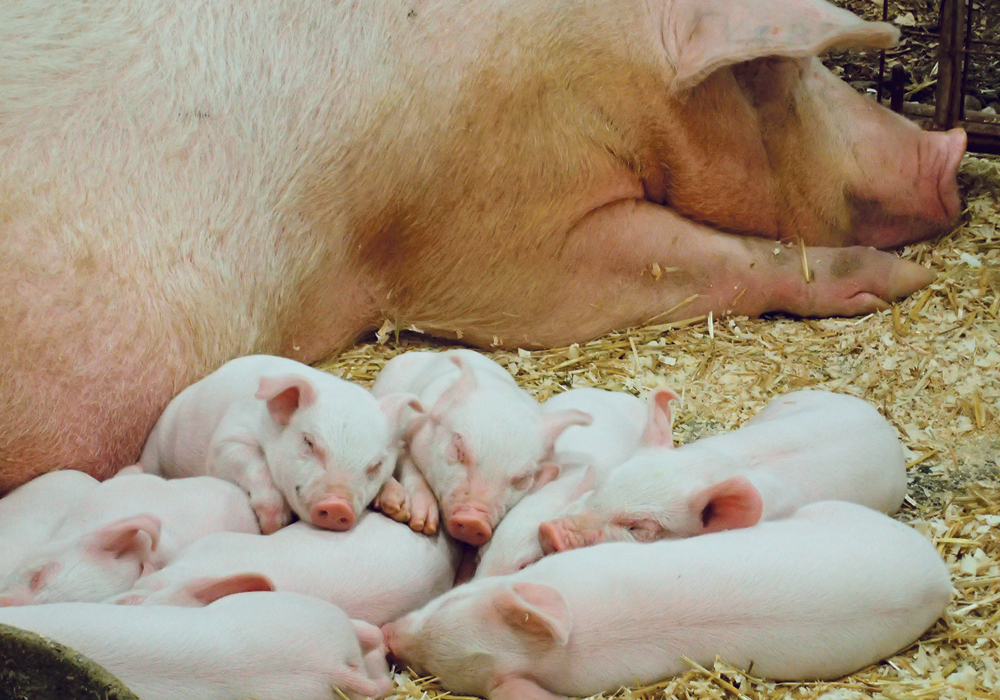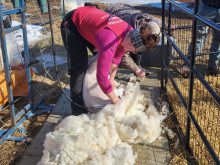Having all of a barn’s sows farrow at the same time can be better for piglet health but also more difficult to manage
BANFF, Alta. — Batch farrowing is getting attention among western Canadian hog producers.
The system of having all sows in the barn farrow in the same narrow time window can have major benefits for piglet health, but it also has challenges for management.
“It’s quite common in Europe. Probably in Western Canada it’s less than 10 percent of production, but every year there’s a few more farms considering and moving to it,” said Dr. Blaine Tully, a veterinarian with Swine Health Professionals Ltd. based in Steinbach, Man.
Read Also

Charges laid after cattle theft
Saskatchewan RCMP lay two charges against a man after six cattle went missing.
“You can’t ignore the health impact, the benefits for having all of your production come in and out at the same time and the impact that that will have downstream with some of the ability to manage better health,” he said in an interview at the Banff Pork Seminar.
“As we try and reduce our antimicrobial footprint on pig farms, it’s another tool to help us do that because healthier pigs just need less medication.”
Tully has helped several farms move into batch farrowing, a multi-week process that requires alteration of sows’ heat cycles using added hormones so all animals in the barn synchronize for breeding.
Batch farrowing thus results in an “all in, all out” scenario for piglets when they are weaned and sent to nursery barns. Tully suggested this improves piglet care and also makes it easier to control disease outbreaks with limited production loss.
“When we’re eliminating some of those viral diseases, our strategy is to get exposure happening all at once, so they all kind of build immunity at the same time and then stop shedding virus around the same time,” he said.
“So when we have larger groups that are the same age, that kind of facilitates that common exposure and elimination process.”
Tully has experience dealing with outbreaks of porcine epidemic diarrhea virus in Manitoba hog operations. Several of those farms practiced batch farrowing, and rather than losing four to seven weeks of production, they lost three to four weeks, “and it seems like we’re saving more pigs.”
Sylven Blouin of Jyga Technologies, a Quebec-based co-operative, converted barns to batch farrowing 22 years ago when he was a supervisor for a large hog operation.
He told those at the seminar that the system improved piglet health, resulted in better post-weaning performance and made better use of employees.
There was lower stillbirth and pre-weaning mortality and improved biosecurity for semen delivery and piglet transport.
However, he also listed the disadvantages.
A change to batch farrowing requires either more farrowing crates or reduced sow numbers if using the same facilities as before. More space is needed to move all weaned pigs at once, and there can be productivity reductions when sows fail to cycle.
As well, Blouin said hog barn employees disliked the system because it reduced bonuses and constrained vacation schedules.
It also made barn cleanout a lengthier and more arduous task. As Tully put it, if batch farrowing every five weeks, the crappy jobs come around only once every five weeks, but they’re five times crappier when they do.
Blouin also listed higher costs for hormones and the need to introduce new gilts as potential drawbacks. As well, there is a big electrical demand at farrowing, and it will likely require a larger shipping room and larger quarantine area.
In the case of his former employer, the switch to batch farrowing was prompted by an outbreak of porcine reproductive and respiratory syndrome (PRRS) and eradication of the illness was easier as a result.
Tully said management mistakes can be amplified in a batch system. Poor conception among many sows, for example, limits any action that can be taken until the next farrowing cycle. Options can also be limited if using natural service boars because more will be needed. If using artificial insemination, that has to be co-ordinated with technicians.
However, batch farrowing gives ample opportunity for good colostrum management and early piglet care.
“That to me is perhaps the real bullet proofing,” said Tully.
The need for extensive hormone use to synchronize the sows means that a veterinarian must be involved to manage off-label use during the conversion.
All told, however, Tully said he cautiously recommends the practice because the advantages outweigh the disadvantages.
“I think most farms that go to batch farrowing probably wouldn’t go back,” he said.


















